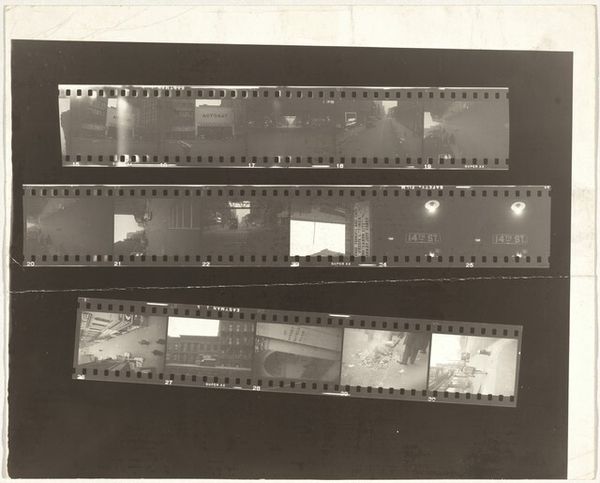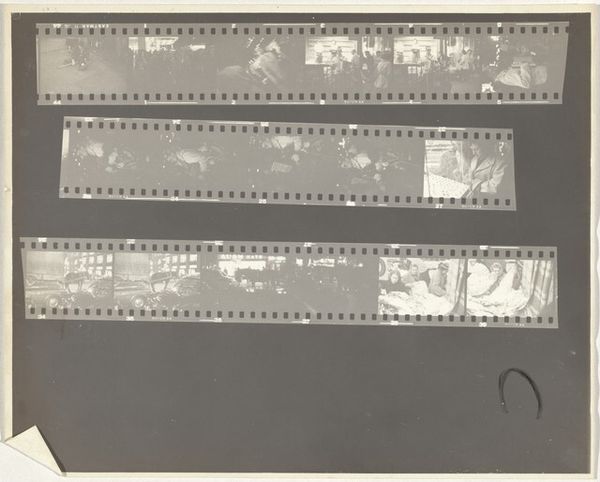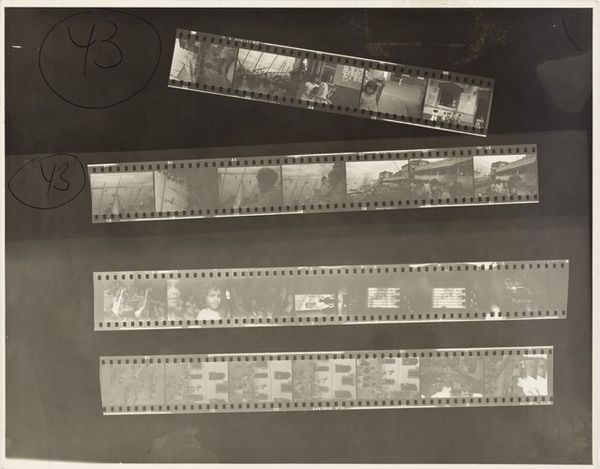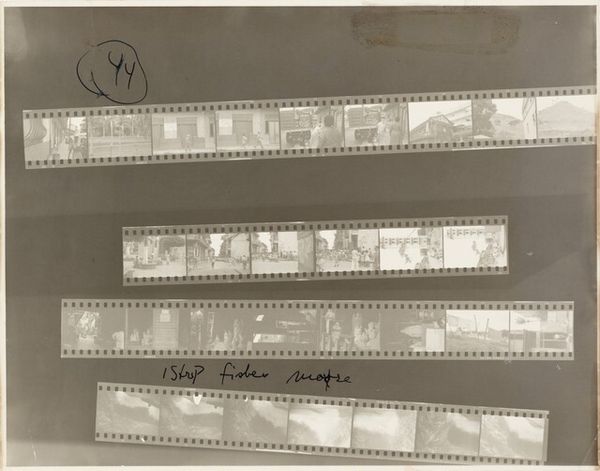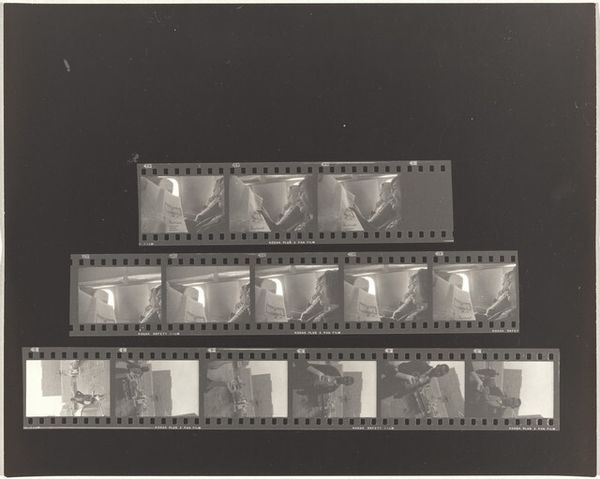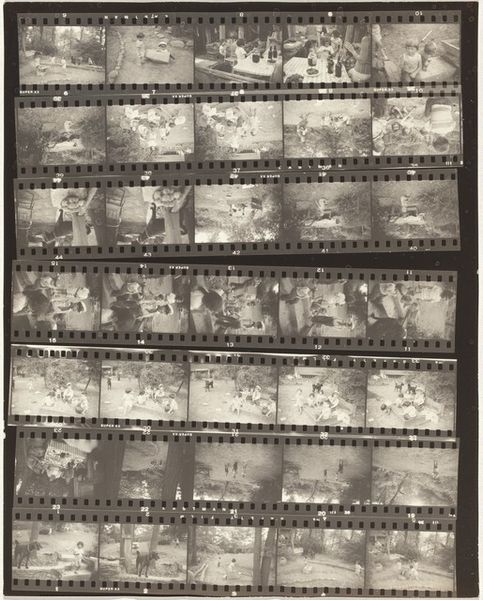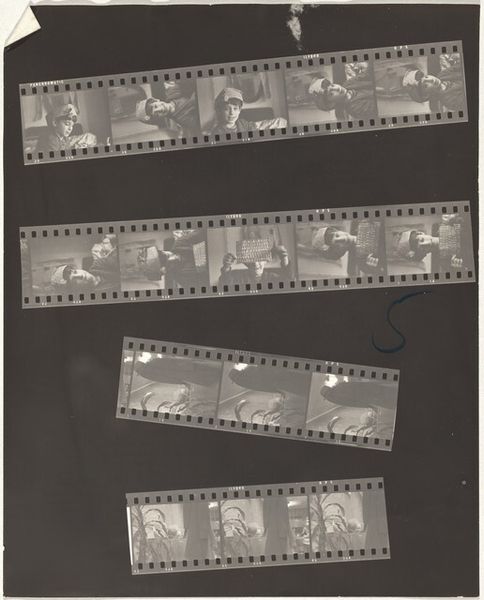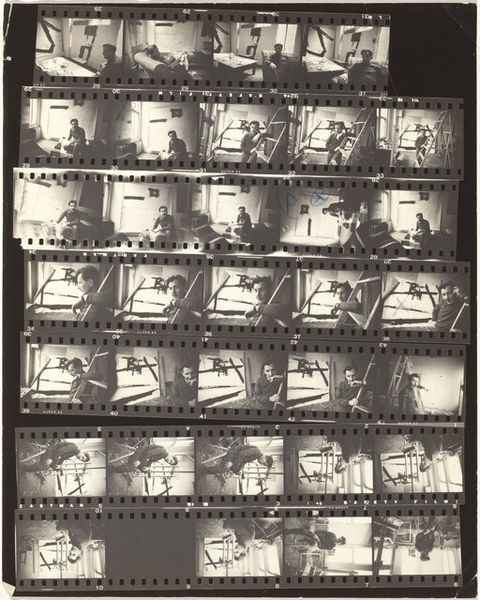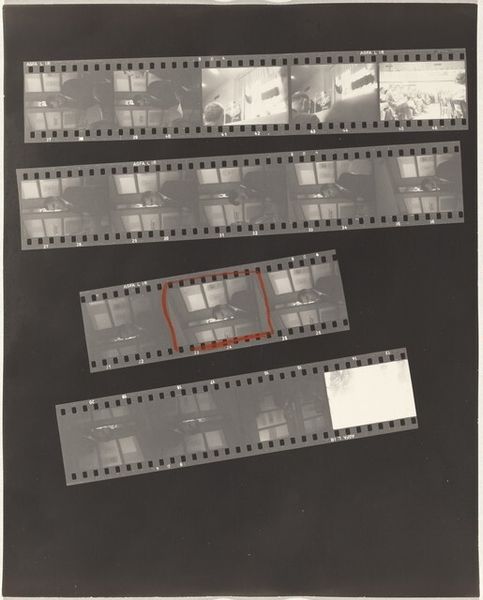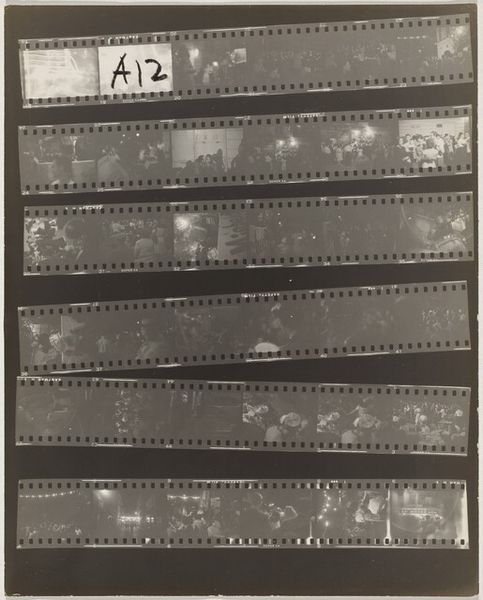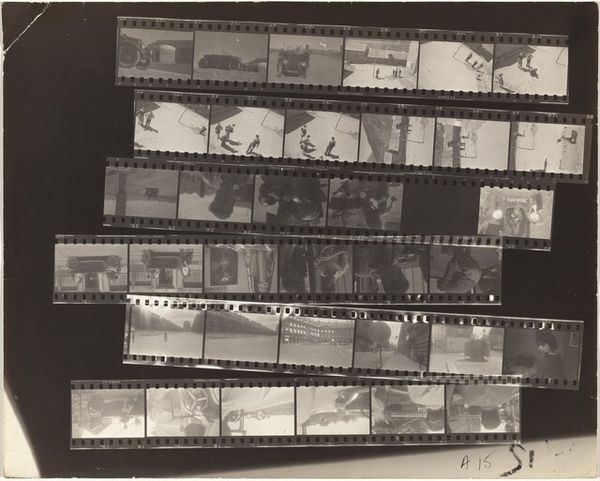
collage, print, photography, montage, gelatin-silver-print
#
abstract-expressionism
#
collage
# print
#
photography
#
montage
#
gelatin-silver-print
Dimensions: sheet: 35.4 x 27.8 cm (13 15/16 x 10 15/16 in.)
Copyright: National Gallery of Art: CC0 1.0
Editor: This is Robert Frank's "Early New York City no number," a gelatin-silver print collage from 1948. The overlapping strips of film create a fragmented, almost dreamlike view of the city. It feels very personal, like flipping through someone's contact sheets. What do you make of its unconventional approach? Curator: This piece presents Frank’s unique view on post-war urban life. We see these strips of film, almost like evidence, offering snapshots, but carefully arranged to hint at themes that extend beyond the images themselves. Notice how Frank assembles these disparate elements – street scenes, numbered frames. How does that arrangement affect your understanding of the piece in relation to documentary photography’s broader context in the late 40’s? Editor: It makes me think about the constructed nature of photography itself. These aren’t presented as objective documents, but as fragments that need to be interpreted. Are you suggesting that Frank is commenting on the role of photography in shaping our understanding of reality? Curator: Precisely. Frank’s work often challenges conventional narratives and expectations. The medium, usually seen as capturing a reality is made very subjective by selection and assembly. The city is a lived and constructed thing. Do you get a sense of how art institutions were responding to everyday life at the time? Editor: This makes the photograph much more engaging. Instead of simply reflecting the world, Frank is questioning how we see it, how history itself is composed. It reminds me that images are not neutral, they are powerful tools. Curator: I agree. By challenging the perceived objectivity of photography, Frank invites viewers to critically engage with the urban environment and the socio-political context of the time. Reflecting upon the agency that Frank assigns to both subject and viewer of photography opens interesting critical pathways to modern media creation. Editor: Thanks! I hadn't considered how the art world's attitude shaped Frank's vision. Now I see this as not just a portrait of New York, but a statement about the act of seeing itself.
Comments
No comments
Be the first to comment and join the conversation on the ultimate creative platform.
